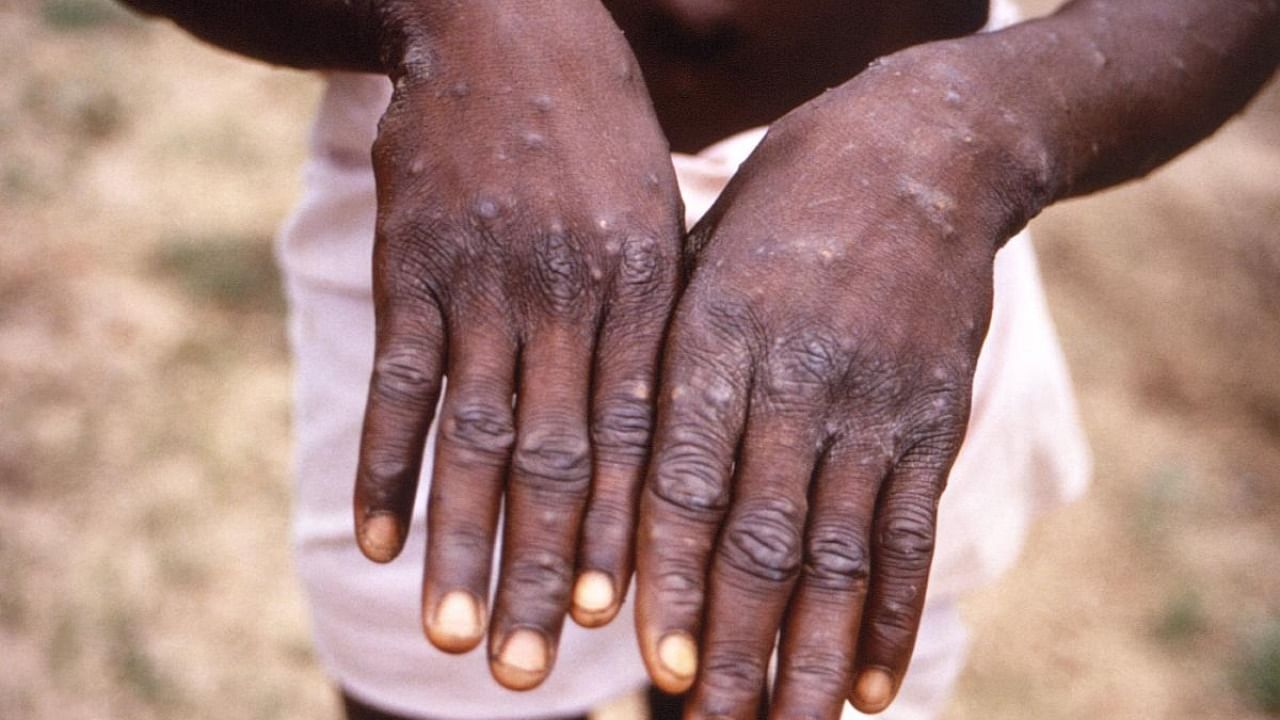
Health authorities in North America and Europe have detected dozens of suspected or confirmed cases of monkeypox since early May, sparking concern that the disease is spreading.
The United States confirmed its first case of monkeypox on Wednesday, May 18; it was diagnosed in a Massachusetts man, who had travelled to Canada recently. The news comes on the heels of Canada investigating more than a dozen suspected cases of monkeypox within its borders.
More than 40 cases have been detected or suspected in Spain and Portugal in recent days, making it the largest monkeypox outbreak in Europe to date. On May 13, the World Health Organization (WHO) was notified of two confirmed, and one probable monkeypox case in the United Kingdom.
The biggest outbreak in recent history was reported in Nigeria in 2017—40 years after a last known case of the disease was recorded. A small cluster of monkeypox cases was detected in the United Kingdom in 2021, but authorities were not much alarmed by it.
The sudden surge in North America and Europe of a disease which is endemic to Africa has put health authorities across countries, and the WHO on high alert.
Wihat is monkeypox?
According to the WHO factsheet, monkeypox is a rare viral zoonotic (a virus transmitted to humans from animals) disease, with symptoms similar to those seen in the past in smallpox patients, but is clinically less severe.
United States’ Center for Disease Control states that the monkeypox virus belongs to the orthopoxvirus genus—which also includes variola virus (that causes smallpox), vaccinia virus (used in the smallpox vaccine) and cowpox virus—in the family Poxviridae.
The disease primarily occurs in tropical rainforest areas of Central and West Africa and is occasionally exported to other regions.
When was monkeypox discovered?
The disease was first discovered in 1958 when two outbreaks of a pox-like disease occurred in colonies of monkeys kept for research, which also resulted in the name ‘monkeypox.’ The first human case of monkeypox was recorded in 1970 in the Democratic Republic of Congo, a time when it was called Zaire and there was an intensified effort to eliminate smallpox in the region.
Since then, monkeypox has been reported in humans in other central and western African countries, such as Cameroon, Central African Republic, Cote d’Ivoire, Democratic Republic of the Congo, Gabon, Liberia, Nigeria, Republic of the Congo, and Sierra Leone.
The majority of infections are in Democratic Republic of the Congo, but cases have also been reported in Singapore, Israel, the US and the UK.
How is it transmitted?
Transmission of monkeypox virus occurs when a person comes in contact with the virus from an animal, human, or materials contaminated with the virus. The disease is mostly transmitted from wild animals such as rodents and primates to people, but human-to-human transmission can also occur.
The virus could enter the body through broken skin (even if it is not visible), respiratory tract, or mucous membranes of eyes, nose, or mouth.
The natural reservoir host (main disease carrier) of monkeypox remains unknown, but African rodents and non-human primates (like monkeys) are suspected to be major transmitters and could infect people.
How does monkeypox spread?
Infection results from direct contact with the blood or bodily fluids of an infected person or animal. Animal-to-human transmission may occur by bite or scratch, ingesting inadequately cooked bushmeat and other animal products of infected animals is also a possible risk factor.
Human-to-human transmission, however, is relatively limited, but can spread through direct or indirect contact with body fluids or lesion material, such as through contaminated bedding. It can also occur from close contact with respiratory secretions, skin lesions of an infected person or recently contaminated objects.
What are its symptoms?
Symptoms include fever, headache, swelling of lymph nodes, back pain, and muscle aches. According to the WHO, swelling of the lymph nodes is a distinctive feature of monkeypox as opposed to other poxes.
The disease is a self-limited one with symptoms lasting two-four weeks, with children more susceptible to severe cases. Complications from the disease can include bronchopneumonia, sepsis, encephalitis, and infection of the cornea.
The incubation period of monkeypox is usually from six to 13 days but can also range from five to 21 days.
The disease has a fatality rate of 0-11 per cent in the general population.
Does monkeypox have a cure?
There is no known cure or vaccine specifically for the monkeypox. Suspected and infected cases must be isolated in specified facilities till the disease abates. Probability of infection can be reduced by raising awareness of the risk factors and educating people about the measures they can take to reduce exposure to the virus.
How can you prevent it?
There are a number of measures that can be taken to prevent its infection. Most important one is to avoid contact with animals that could be carrying the virus—including the animals that are sick or that have been found dead in areas where monkeypox occurs.
Infected patients must be isolated from others who could be at risk for infection.
After coming in contact with infected animals or humans, people must practice good hand hygiene. For example, washing your hands with soap and water, or using an alcohol-based hand sanitiser.
People should avoid contact with any materials, especially bedding, which has been in contact with a sick animal.
When caring for patients, caregivers must use personal protective equipment.